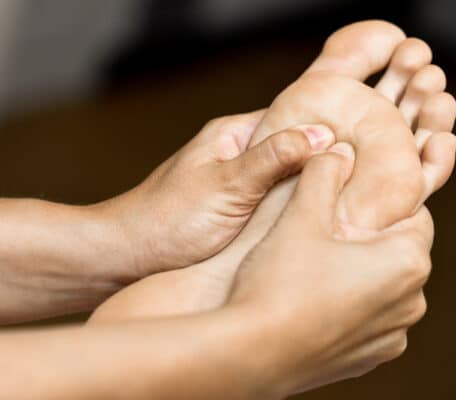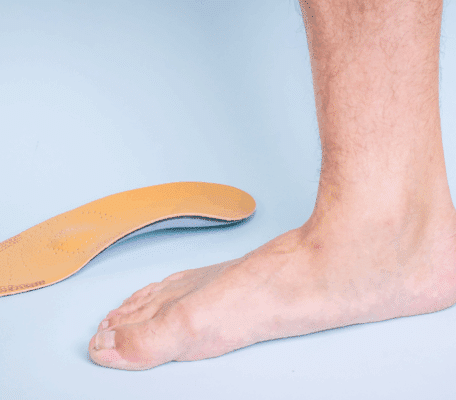If you have a foot problem, you may be thinking about seeing a professional to have it treated. You may be wondering whether you should see a chiropodist or a podiatrist. Do you know the difference between a chiropodist and a podiatrist? Which one is a better choice?
This is a common source of confusion, but the truth is that a chiropodist and a podiatrist are the same thing. Simply put, chiropodists and podiatrists are both foot doctors. They have the same skills and qualifications.
In the UK and Ireland, we typically call this type of professional a chiropodist, although the term podiatrist is becoming more common here. Most of the English-speaking world uses the term podiatrist.
What Does a Podiatrist or Chiropodist Do?
Chiropodists and podiatrists are foot doctors who deal with common foot problems. They help people who have many types of foot problems, including ingrown toenails, toenail fungus, corns, calluses, athlete’s foot, and bunions etc.
They provide people with advice on how to care for their feet and make recommendations as to the best footwear choices for your feet.
What Can a Podiatrist or Chiropodist Do for Me?
If you have any type of problem with your feet, even minor issues like thickened toenails, dry, cracked skin, or warts, you should consider visiting a podiatrist or chiropodist. They can help you by removing hard skin and calluses from your feet, clipping your toenails, and advising you on how to care for your feet properly.
Many times, the problem can be dealt with while you are in the podiatrist’s office, and you will leave there feeling much better about yourself.
The podiatrist may also recommend that you wear a particular type of shoe or orthotic inserts. If you have high arches in your feet or your feet are flat, it is important that you wear supportive shoes. Custom Orthotics can provide you with the customized support that your feet need and make it more comfortable for you to spend time on your feet each day.
What Do Chiropodists and Podiatrists Treat?
Podiatrists and chiropodists treat many types of foot conditions, including the following:
- Abnormal gait (walking pattern)
- Pain in the feet, ankles, hips, knees, lower back, and legs
- Arthritis (osteoarthritis and rheumatoid arthritis)
- Athlete’s foot
- Blisters
- Bunions
- Bursitis
- Calluses
- Corns
- Cracked Heels
- Foot complications due to diabetes
- Flat Feet
- Fungus
- Hammer toes and claw toes
- Heel Spurs
- High arches
- Infections
- Ingrown toenails
- Pidgeon toes
- Metatarsalgia
- Neuromas
- Numbness
- Osgood Schlatter’s disease
- Plantar fasciitis
- Posterior tibial tendinitis
- Sports injuries
- Sever’s disease
- Shin splints
- Sprains
- Spurs
- Strains
- Stress fractures
- Tendonitis
- Plantar Warts
Some podiatrists are licensed to perform surgery, and may be known as podiatric surgeons. However, surgery is typically a last resort.
Most podiatrists and chiropodists emphasize prevention as the best form of medicine and encourage patients to address foot pain by caring for their feet, wearing proper footwear, and using orthotic inserts.
Podiatrists and chiropodists know that foot pain is often caused by wearing shoes that don’t fit properly or don’t provide necessary support. Choosing shoes that do not have high heels but do give the foot stability and support is an important step toward preventing foot pain.
If you suffer from foot pain, visit our expert team at one of our Foot solutions Stores. Our team of professionals can do many things to resolve your foot problems. We can perform gait analysis to identify any abnormalities in your gait that might be causing your problems.
We will also measure your feet to make sure that you are wearing the proper size and help you choose supportive shoes. We can also customise some of our shoes to meet your needs & provide you with custom arch supports to make sure that you have the all the support that you need.




